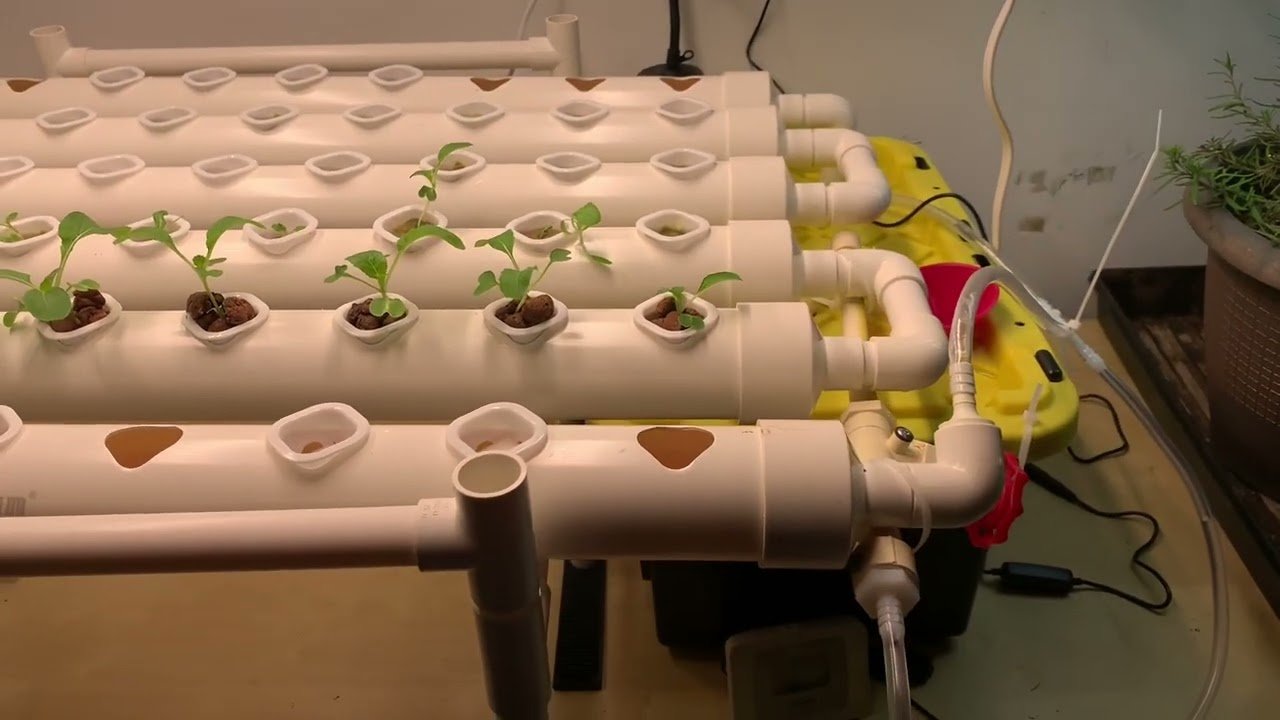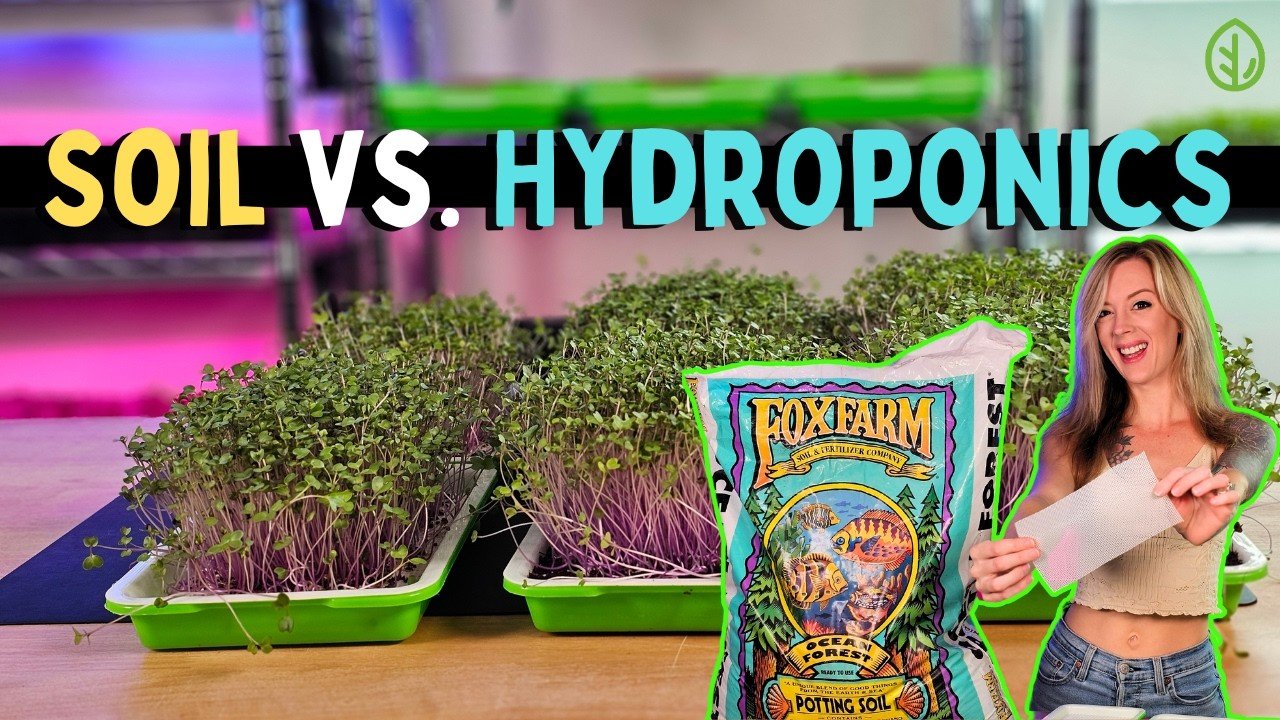My Hydroponic Adventure: A Backyard Chronicle
It all started with me sitting at my kitchen table, coffee in hand, staring at my laptop late one night. The air was thick with the smoke of the leftover pot roast from dinner, and the subtle hum of my refrigerator provided a backdrop to what felt like the flurry of ideas bouncing around in my brain. Somewhere, in the bowels of the internet, I stumbled upon a video of a hydroponic system. The plants looked lush and vibrant, growing effortlessly in water without the mess of soil. I was hooked—the perfect project for my backyard.
Getting Down to Business
Armed with enthusiasm and a sense of adventure, I set out to replicate that online wonder in my own space. I figured, how hard could it be? I had a shed full of supplies scavenged from weekends of DIY projects: PVC pipes, old buckets, and some grow lights I’d picked up at Home Depot on sale last summer. “I’m practically an expert now,” I told myself, feeling almost like a mad scientist.
The first week was a flurry of activity. I hammered away in the garage, cut pipe segments, and spent a good hour figuring out how to wire the light system. I had no idea what I was doing, but stubborn determination kept me grinding through the occasional frustrating mishaps. So there I was, fishing out cables and adapters, wondering why the lights always seemed to dim just when I thought I’d nailed the setup.
The Fishy Dilemma
Now, what’s an aquaponics system without fish? That’s where things took a turn. I headed out to the local pet store feeling optimistic. I’d read about tilapia, how they grow rapidly and could tolerate less-than-perfect water conditions. “These guys should thrive in my backyard oasis,” I thought, with visions of both green plants and happy fish swimming around.
Fast forward a week, and the little tilapia were splashing about, putting on a show. But things quickly turned sour. The water started smelling rank—not that pleasant earthy scent of a country pond, but more of a stale perfume mixed with a slap of ammonia. That’s when I realized I needed to cycle the water, and fast; no amount of optimism could shield me from the reality of fishkeeping. Poor little guys were gasping at the surface like they were auditioning for a horror film.
Panic Mode Engaged
There I was, panic-mode fully activated, trying to fix a mess of my own creation. I boiled down some water to make an emergency nutrient solution, pried open an old box of water testing kits, and spent an afternoon meticulously checking pH, nitrates, and more. Each time I dipped that little test strip into the tank, I was half-expecting a small fish funeral.
Here’s the kicker—I almost gave up when I couldn’t get the pump to work. I crammed my hand into a tangle of wiring that felt like the world’s most unwelcome game of Twister. I even resorted to cursing at what I internally labeled “that stupid pump.” I tried everything: resetting it, fiddling with the hoses, and doodling diagrams like a child trying to draw a spaceship.
Just when I was about to toss everything into the creek behind our property, the pump gave a whine and, at last, sputtered to life. It was like a burst of glory; water was flowing, lights flickering back on—my mini ecosystem was actually working! I thought I’d survived the apocalypse only to find the light switch at the last minute.
A Lesson in Resilience
The months rolled by, and with each setback, I learned a little more about the delicate dance between water and plant life. Red romaine lettuces began to sprout, and I felt an almost parental pride—though I’d never treated a vegetable with such reverence before. One day, I leaned down, almost ear to ear with my greens, and whispered, “You’re beautiful.”
But let me tell you, there were still missteps. One morning, I walked outside and nearly fainted at the sight of bright green water. Algae had taken over faster than I could blink. “What now?” I muttered, scratching my head, the fish giving me their best guilt-inducing side-eye from their murky home. I quickly realized that I needed to balance nutrients and introduce an air stone for better oxygenation. Another trip to Home Depot—and yes, I grabbed more grow lights, convinced they would absorb my stresses somehow.
The Ups and Downs
Eventually, I perfected my system, learning about biofilters and the importance of each component. Each nibble from my fish felt like a badge of honor, a reminder that everything had come together despite my blunders. When my first batch of leafy greens graced my kitchen table, I may have shed a tear of joy. The satisfaction of munching on homegrown produce felt surreal, even if my design was far from perfect.
In the end, here’s what I came away with: don’t dwell on your missteps. Embrace the chaos—my crazy backyard hydroponics journey taught me that perfection was never the aim. There’s beauty in the struggle, and what started as a Pinterest-inspired dream became something alive and messy, much like life itself.
So, if you’re thinking about diving into the world of hydroponics or aquaponics, don’t worry about getting it perfect. Just start. You’ll figure it out as you go. Trust me on that—to all the would-be mad scientists out there, step into that garage, roll up your sleeves, and get your hands dirty. You might just surprise yourself.
And if you want more support or guidance on this wild journey, come join the next session: Reserve your seat for a chance to share and learn together!






Leave a Reply